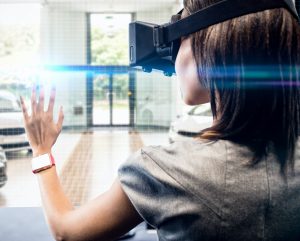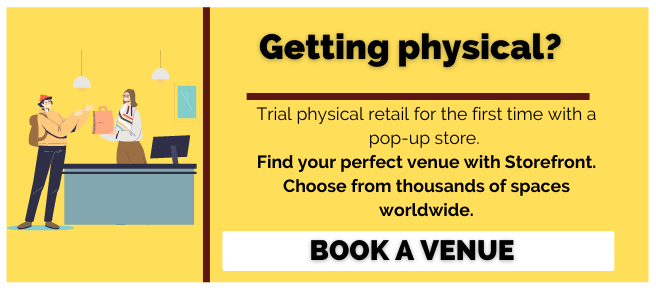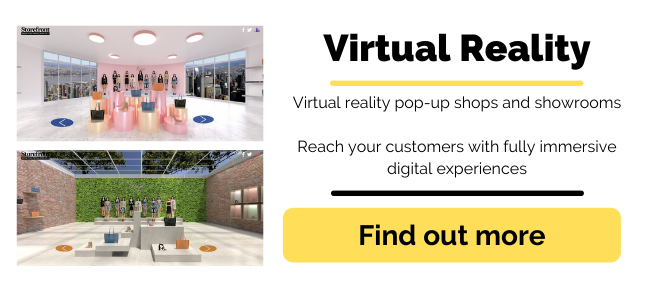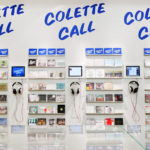Phygital retail is the latest buzzword for the strategies and tactics retailers use to engage with their customers.
‘Phygital’ is a portmanteau of ‘Physical’ and ‘Digital’, and it represents the merging of the physical with the digital.
In the past we have read about, amongst others, ‘omni-channel’, ‘multi-channel’, and ‘holistic’ approaches. In simple terms, ‘Phygital’ is the next and latest evolution of that same vein of thinking as retailers consider how best to engage with their consumers efficiently, effectively and with impact.
Digital retail meets physical retail: Phygital
Our customers live their lives online. Most aspects of their everyday lives have a digital equivalent. As consumers, our lives are now today a blend of digital and physical. We may not realise it but the two worlds are so intertwined that in many cases the differences are indistinct. It makes sense for retailers to meet customers in that same world and with the same approach.
Phygital retail is the blurring of lines between physical retail and digital retail. What this boils down to is taking the best elements of each and using them to enhance the performance of both while delivering a better customer experience.
For too long have physical and digital been considered and tackled as distinct channels.
Physical and digital retail – a match made in heaven?
It’s no secret that ecommerce has been accounting for an ever-increasing percentage of overall retail sales. In the past few years we have been bombarded by countless theories and predictions of how digital retail (ecommerce) is outperforming physical retail. How high streets are dying and why people don’t want to go to shops any more.

While it’s true that ecommerce has advantages over physical retail l it’s simply not right to consider the two facest as competing against each other. Ecommerce allows customers to browse products at their leisure (from their sofa), hunt for good deals and get them delivered straight to their door. Physical retail just cannot compete with that and shouldn’t try to. Where physical retail shines is with experience, brand loyalty and building raising awareness.
Phygital retail example
Let’s flesh out a theoretical example. A brand opens a store for a month but the store doesn’t make a single sale. Historically, this could class that store as a failure. Let’s say in that same period the company’s website generated 500 sales. If you had to choose between the two which would you choose? If you were comparing them like for like and judging them on how many sales you made you would have a clear winner. However, what if the store, while not making a single sale, introduced the brand to 200 new customers? What if a proportion of those digital sales were from those customers?
Suddenly we have a very different picture. Now let’s add another level of complexity… What if each customer that came to the website having visited the store then came back to the website and made additional purchases over the course of the next year? Rather than single one-off sales the website is now catering for a dedicated and brand loyal customer. A customer who was first wooed by the physical store.
Physical stores offer brands the opportunity to deliver experiences that their ecommerce equivalents simply cannot reproduce or equal. Marketing today is all about delivering impactful and delightful experiences. Brand loyalty is the holy grail and the best driver of increased brand loyalty is undoubtedly the types and relevance of the experiences a brand is able to deliver. Ecommerce stores have their many benefits but they cannot reproduce the in-person experience of actually being somewhere, engaging with people and being fully immersed in a brand’s message and community.
Phygital retail strategies
Phygital retail is a concept that has actually been around for a while and certainly isn’t going anywhere. By blending physical and digital retail together you maximise the potential of both. Playing to the strengths of each.
But, let’s get real for a second. It’s easy to talk about blending the physical and digital. How do you actually do it? Here are a few strategies you should consider if you aren’t already.
Click and collect
An obvious one. One that is mainstream already yet is highly demonstrative of the power of phygital. Click and collect or ‘buy online, collect in store’ provides the convenience of online shopping with the instant gratification of buying in store rather than having to wait days for shipping.
Buy in store – deliver at home
Like click and collect turned on its head. This is where you browse and make purchases in store but all sales are managed in the digital environment with the customer’s purchases being shipped to their homes.
In store reviews
User reviews and UCG in general is becoming a more and more powerful tool and important step in the sales cycle. By integrating curated online user reviews on products in a physical environment retailers can deliver value and move their customers along the sales cycle. Do you really think they’re not looking at reviews on their phones as they browse any way? Make it easy for them.
Cashier free shopping
Rather ominously known as ‘just walk out shopping’, cashier free shopping is where retailers enable customers to make purchases in store digitally and then leave the store with the product. Amazon Go has been a key exponent of this approach.
Augmented and Virtual Reality
A big one and one that you can’t help but feel we’re going to see a lot more of. Virtual reality and augmented reality technologies sit at the crossroads of digital and physical. Whether it’s using augmented reality to ‘try on’ clothes in store or virtual reality to immerse consumers ever further into your brand story the possibilities are extensive.
Location-based push notifications
Location-based push notifications are a way of sending notifications to individuals based on their location. You could send someone nearby a discount as they walk by for instance? Or let a past customer who is in the area know that you’ve updated your products or that a particular favourite is back in stock.
Phygital retail and pop-up shops
For many years now brands have used short-term retail (pop ups) to reach new customers, gather market insight and build brand loyalty. When it comes to phygital retail there are few better vehicles. Pop-up shops allow brands to experiment with short-term approaches, trial new locations and deliver exceptional experiences.
Check out this article on the business benefits of running a pop-up shop.








